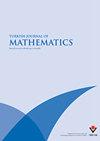Effect of fractional analysis on some special curves
IF 0.9
4区 数学
Q2 MATHEMATICS
引用次数: 0
Abstract
: In this study, the effect of fractional derivatives, whose application area is increasing day by day, on curves is investigated. As it is known, there are not many studies on a geometric interpretation of fractional calculus. When examining the effect of fractional analysis on a curve, the Caputo fractional analysis that fits the algebraic structure of differential geometry is used. This is because the Caputo fractional derivative of the constant function is zero. This is an important advantage and allows a variety of fractional physical problems to be based on a geometric basis. This effect is examined with the help of examples consistent with the theory and visualized for different values of the Caputo fractional analysis. The difference of this study from others is the use of Caputo fractional derivatives and integrals in calculations. Fractional calculus has applications in many fields such as physics, engineering, mathematical biology, fluid mechanics, signal processing, etc. Fractional derivatives and integrals have become extremely important as they give more numerical results than classical solutions in solving various problems in many fields. In addition, many problems that cannot be answered by classical analysis have been solved by Caputo fractional analysis. In this context, the curvatures of a curve are calculated by Caputo fractional analysis and obtained differently from the classical result. It is aimed to characterize the curve more accurately with the numerically more accurate calculation of the curvatures.分数分析对某些特殊曲线的影响
:在本研究中,研究了应用面积日益增加的分数导数对曲线的影响。众所周知,关于分数微积分的几何解释的研究并不多。在考察分数分析对曲线的影响时,使用了符合微分几何代数结构的Caputo分数分析。这是因为常数函数的卡普托分数导数为零。这是一个重要的优势,允许各种分数物理问题基于几何基础。通过与理论一致的例子检验了这种影响,并对Caputo分数分析的不同值进行了可视化。这项研究与其他研究的不同之处在于在计算中使用了卡普托分数导数和积分。分数阶微积分在物理、工程、数学生物学、流体力学、信号处理等许多领域都有应用。分数阶导数和积分在解决许多领域的各种问题时,比经典解给出更多的数值结果,因此变得极其重要。此外,许多经典分析无法回答的问题也被卡普托分数分析所解决。在这种情况下,曲线的曲率是通过卡普托分数分析计算的,并且与经典结果不同。其目的是通过对曲率进行更精确的数值计算来更准确地表征曲线。
本文章由计算机程序翻译,如有差异,请以英文原文为准。
求助全文
约1分钟内获得全文
求助全文
来源期刊
CiteScore
1.80
自引率
10.00%
发文量
161
审稿时长
6-12 weeks
期刊介绍:
The Turkish Journal of Mathematics is published electronically 6 times a year by the Scientific and Technological Research
Council of Turkey (TÜBİTAK) and accepts English-language original research manuscripts in the field of mathematics.
Contribution is open to researchers of all nationalities.

 求助内容:
求助内容: 应助结果提醒方式:
应助结果提醒方式:


